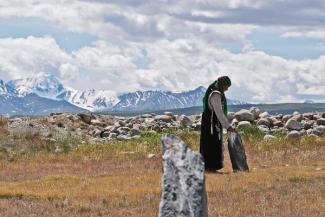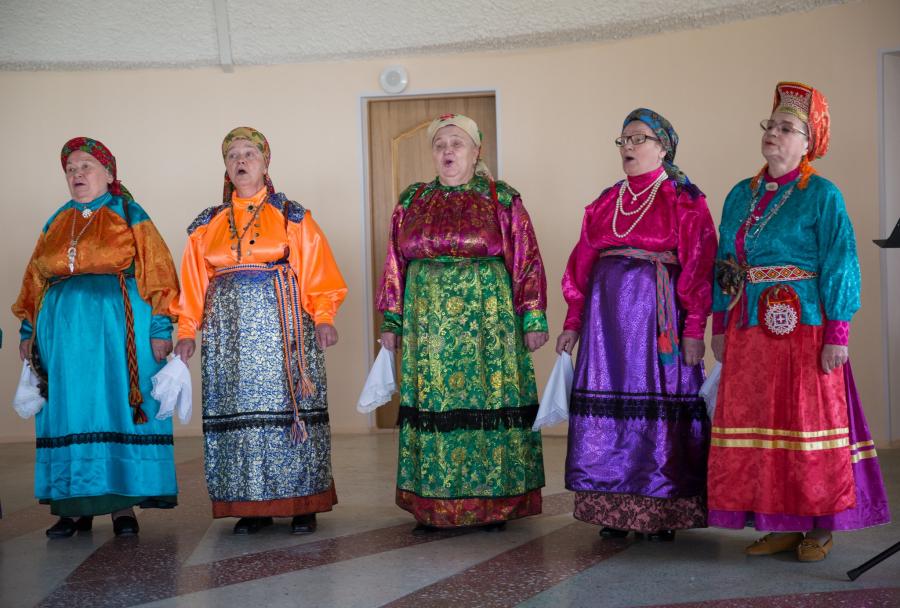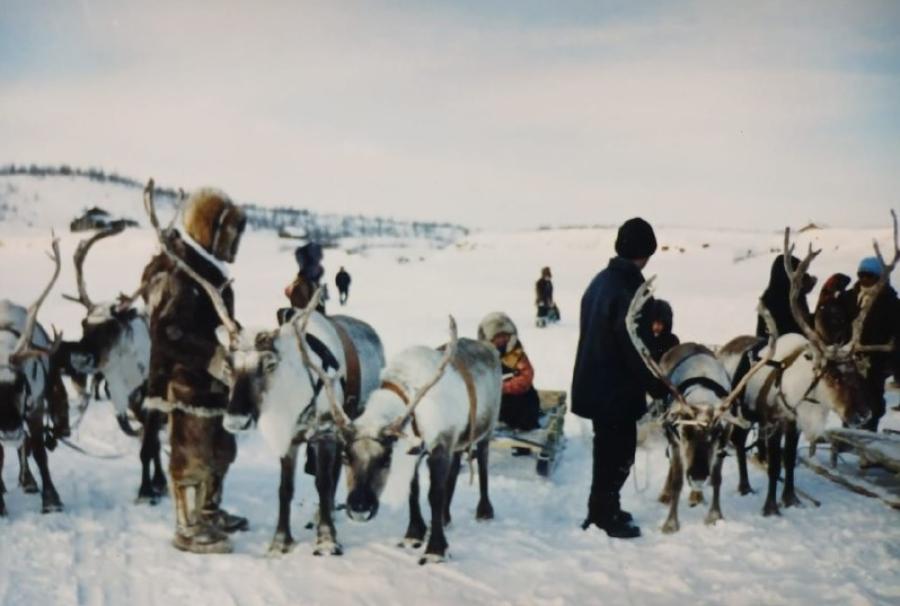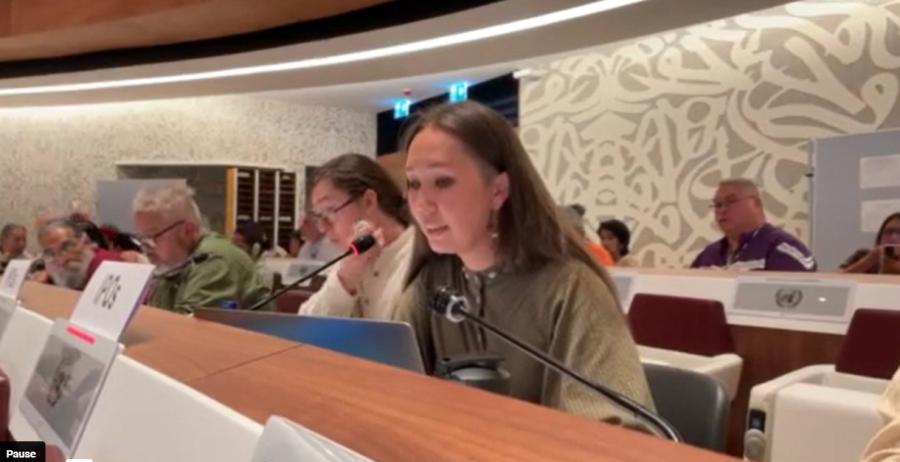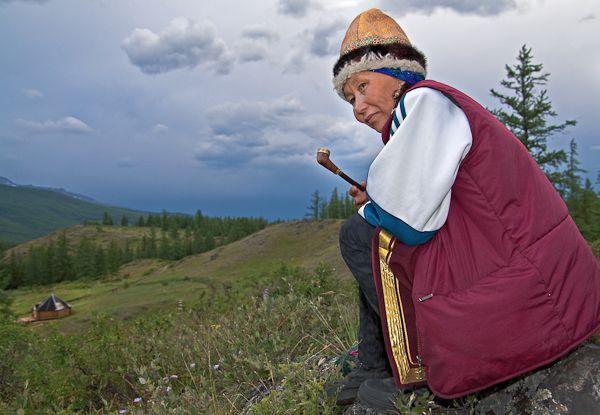
By Gleb Raygorodetsky
On a warm summer’s day, a noblewoman of the nomadic Pazyryk tribe was buried in a large ancient burial tomb, or kurgan, on the Ukok Plateau — now a region of the Russian Altai that borders China, Mongolia and Kazakhstan. Mummified with herbs, bark and marten fur, she was placed in an oversized sarcophagus hewn from a single larch log. Six sacrificial horses, richly saddled and harnessed, were laid to rest on the northern side of the burial chamber, ready to carry her to the realm of her ancestors.
Twenty-four centuries later (in the summer of 1993) this noblewoman was unearthed by a team of Russian researchers from the Novosibirsk Centre of the Russian Academy of Sciences. The find was hailed as one of the greatest archaeological discoveries of the century, providing insights into Pazyryk life previously unknown to modern science. Yet, the nature of the noblewoman’s status in Pazyryk society and her relationship with modern-day Altai people continues to elude the scientific community. Who was she? A ruler or a holy woman? A revered bard or a healer?
Local people know her as Ukok Princess Kadyn and, unlike scientists, have absolutely no doubt about her role in the past, present and future of the Altai. Like many powerful kams (shamans) before her, this daughter of the Altai was buried on the sacred mountain plateau of Ukok to ensure the peace and wellbeing of her people.
The Russian authorities dismiss such sentiments as unscientific and backward, arguing that the research has not shown even morphological or genetic links between the Princess’s remains and the modern Altai peoples. This argument befuddles the local people who see the Princess Kadyn and the Altai region as one. Since the Princess was unearthed, the local people have seen many signs that the Princess’ continued absence is upsetting the balance in the region - from the nightmares reported by the archaeologists during the excavation, to the near-crash of the helicopter as the sarcophagus was being airlifted from Ukok, to subsequent powerful earthquakes, one of which levelled an entire Altai village. Altai people feel that to restore the order of things, the Princess Kadyn must be returned to her rightful place on the Ukok Plateau.
In my global search for stories of local answers to the challenges of climate change, I came to the Altai in the summer of 2009 — as part of a small group of researchers, filmmakers and custodians of sacred sites from different parts of Central and Inner Asia — to attend a workshop entitled “Sacred Sites and Protected Areas of Altai”. After the workshop, we travelled over 500 kilometres southeast from the Altai’s capital, Gorno-Altaisk, to the ultimate destination of our three-day trek — the excavated and later backfilled kurgan of the Princess Kadyn on the Ukok Plateau; a place that the Greek historian Herodotus named the Pastures of Heaven and one that is now included in the UNESCO Golden Mountains of Altai World Heritage Site.
Maria Amanchina, a local kam, has a special and intimate relationship with the Ukok Princess Kadyn. She had joined our group to conduct a ceremony reaffirming her commitment to bring the Princess back home, where the noblewoman could continue playing her vital role of keeping the Altai and its people in balance.
Strings of multi-coloured beads and cowry shells dangled from Maria’s long sleeveless kaftan, tinkling rhythmically as she walked slowly around the kurgan. As the rest of our group wandered around, each of us connecting with this sacred place in our own way, Maria knelt by a large upright boulder and lit her pipe, puffs of smoke escaping from the corners of her mouth. Her eyes closed and she bowed in silent prayer As if trying to chase a headache away, she pinches the bridge of her nose with her fingers – perhaps the fate of Ukok is the source of her pain.
All that is left of the ancient burial tomb is a circle of boulders strewn around a pile of rocks at its centre – a giant stone target scarred into the flesh of the Ukok Plateau. Today, the Ukok Plateau is indeed a target for many — from Russian Jeep enthusiasts criss-crossing the fragile wetlands in their mud-splattered 4x4 vehicles to researchers looking at the impacts of warming climate on the permafrost that still keeps many kurgans well-preserved; and from development companies planning a major industrial corridor to China to local people struggling to protect these sacred lands.
Even if Maria succeeds in overcoming the government opposition to her quest and is eventually allowed to rebury the Princess’ remains on the Ukok Plateau, can there really be any hope for the Ukok Princess of ever coming home? The permafrost that preserved the remains of the Altai’s ancestors in burial kurgans for thousands of years is disappearing, melting away because of steadily rising air and ground temperatures in the region. Climate change is literally melting away the cultural heritage of the Altai people, a rich and irreplaceable part of the global heritage. At least this is what worries scientists.
As our vans began a slow climb toward a mountain pass at the edge of the Ukok Plateau on our departure, two Russian UAZ jeeps tumbled down the mountain pass toward us. Several men stepped out of the vehicles to greet us. They were members of a large Belgian-Russian team of researchers from UNESCO and Ghent University, documenting, monitoring and developing plans for preserving the “Frozen Tombs of Altai”, as part of a UNESCO World Heritage conservation project.
During a brief exchange interspersed with energetic handshakes, and cigarette and lighter swaps, the UNESCO-Ghent team quickly sketched out what they fear is in store for the Altai’s frozen tombs. Although permafrost has been relatively stable in the Altai since the Late Pleistocene glaciation about 18,000 years ago, during the 20th century the average ground temperature in the Altai increased by about 0.8 degrees Celsius. At the lower edge of the permafrost extent, exactly where many Altai kurgans are located, even this slight warming is enough to push permafrost dangerously close to the melting point.
And in many parts of the Altai, it is already melting. As air temperatures continue to rise — scientists predict an increase of 3-6 degrees Celsius by 2080 — permafrost will disappear completely in many areas of the Altai Mountains.
Concerned about the future of the kurgans, UNESCO and Ghent University, along with their Russian partners, have been cataloguing the Altai’s frozen tombs to help develop conservation and preservation plans. Some of the proposed solutions include elaborate schemes to shade each individual tomb from direct sunlight to stabilize its temperature.
The day after we returned from our pilgrimage to the Ukok Princess’s kurgan, Maria invited me into her ail, a traditional Altai house. The late afternoon light seeped through the open smoke hole in the roof. Silently mouthing a chant, Maria knelt by the fire holding a small pot of milk. Making an offering, she swished the wooden spoon through the air a few times and tiny pearls of milk spattered over the fire, jumping, popping and hissing on the searing, soot-covered rocks. Puffs of pearly steam mixed with the trails of pale smoke rising from the smouldering logs. Maria pulled on her pipe and wafts of blue pipe smoke drifted up, mixing with the pale smoke from the hearth. Over the next couple of hours, with occasional breaks for hot Altai tea, we talked about her worries and hopes.
Maria’s parents were shamans and people would come to them to be healed. Such practices were strictly forbidden during the Soviet times, but her parents would help people in secret. It was through her mother’s family line that she became a shaman, discovering as a little girl that she was able to heal people and to see into the future. She hadn't really known that she would become a strong healer until she grew older.
“Once, when I was in my teens,” remembered Maria, “I was looking after some sheep grazing on a summer pasture and I dozed off. I dreamed of a white-bearded man clad in white. He told me that it was time for him to leave the Altai and its people, but promised to return in twenty years. He said, as a proof of his promise, he would send my sheep back home. When I awoke, I saw a white rider galloping away in the distance. When I returned home, the sheep were already there. My father then explained to me that I had met the Spirit of Altai, our protector, whose home is Belukha Mountain.”
In her late twenties, Maria became quite ill. A local healer told her that nobody could cure her malady — that she had to heal herself by answering the call of the Spirit of Altai. And so she set off on a journey to become a shaman, relying on the guidance of her dreams, visions and intuition. Over the next twenty years, little by little she became the powerful healer she is now.
The Spirit of Altai returned to Belukha as promised. He sought Maria out in her dreams warning her about a coming earthquake — the Altai’s response to the violation of Princess Kadyn’s kurgan. He gave her detailed instructions on how to conduct rituals over the next three years to spare the lives of local people during the earthquake. She followed his instructions judiciously and while the 2003 earthquake destroyed many buildings throughout the southern part of the Altai, and even levelled an entire village, no humans perished.
As Maria explained it to me, the relationship between the people of the Altai, the sacred Ukok Plateau and ancestors buried in the kurgans is direct, ever-present and vital. The Spirit of Altai and the Ukok Princess Kadyn are strongly linked with each other, she told me. Both play important roles in maintaining the wellbeing of the Altai and its people. The Ukok Plateau has traditionally been a sacred resting place for powerful Altai shamans and healers, a place from which they could continue protecting the Altai and its people whether from diseases and enemy invasions, or droughts and severe winters.
Disturbing such a sacred place disrupts the ebb and flow of life, the Universe, the Altai. Without the Princess on the Ukok Plateau, the Altai people are struggling to maintain the balance in their lives — whether they have to overcome daily strife, deal with climate change, or fight new development. This is why for the past six years Maria has been working so hard to bring the Princess back to her Ukok home.
“Whether we are healers or commoners,” Maria says, “All of us are flawed mortal human beings. On our own, we have no hope of ever healing anybody or fixing anything. We can do it only by asking the Creator and the spirits of animals, plants, and places to help us with the task of healing the Earth. If we are honest and true to the task, then help is given to us.”
The ail’s door squeaked and the driver poked his head inside. He was apologetic. If we were to make it to Gorno-Altaisk by nightfall, we would have to leave soon. His timing was good, though, as Maria was worn out by our long conversation. I thanked her, making her promise to resume our discussion when I returned to the Altai.
“Did you feel the energy of Ukok?” Maria asked me, her tired face aglow, as I was about to step outside of the ail. “It feels so soft and gentle, as if you’re swimming in a fresh mountain spring.”
As the car rattled and bumped on our way to the city, I thought back to our meeting with the UNESCO team conserving Altai kurgans. For Maria and her people, even such a well-intentioned initiative may seem misdirected. For them, the Altai kurgans are not randomly scattered burial mounds filled with precious objects, but intricate structures created by their ancestors to enhance and propagate the energies of a particular sacred landscape, like the Ukok Plateau. Once such a sacred site is disturbed, whether through archaeological work or development, it can no longer perform its function until it is restored and revived.
As the climate changes, the future for the Altai tombs that Maria and her people seek, is not about keeping ancient artefacts encased in permafrost. They want to restore and sustain the role of the ancestral burial kurgans and other sacred sites in protecting Altai and its people from various challenges. The capacity of Maria and her people to face the challenges of climate change and development, depends on the Ukok Princess Kadyn returning to her Ukok home.
Additional Resources:
Restoring the Sacred Web of Life in Siberia’s Golden Mountains
United Nations University Channel
This article is part of the Healing the Earth project of the Conversations with the Earth (CWE) initiative, a multimedia platform that brings Indigenous voices on climate change to the global audience. Follow CWE on Facebook or Twitter @ConversEarth. An earlier version of this article was published on ourworld2.0.
—Gleb Raygorodetsky is a United Nations University’s Traditional Knowledge Initiative Research Fellow.
See our campaign Russia/China: Pipeline Threatens Sacred Highlands.
